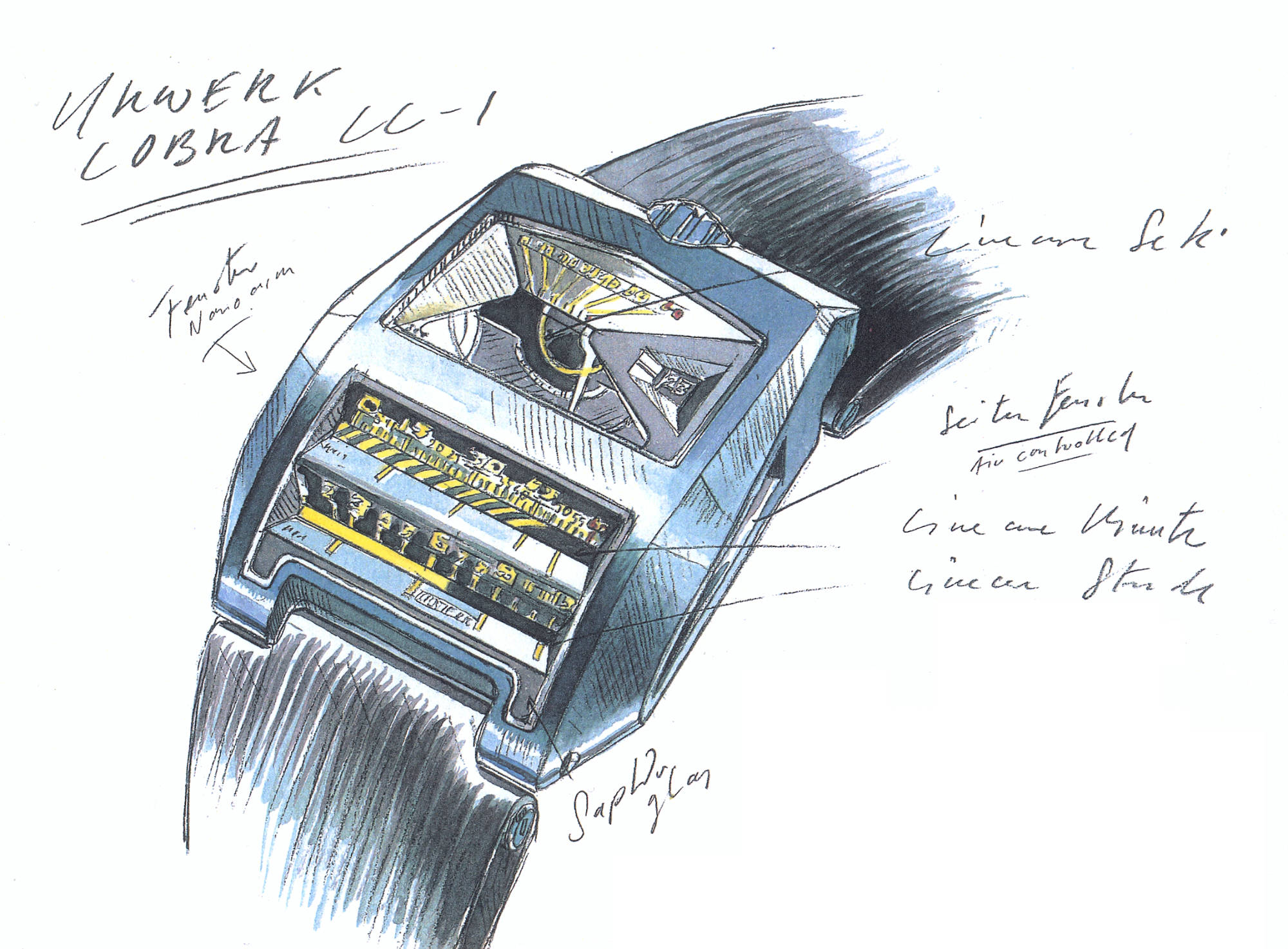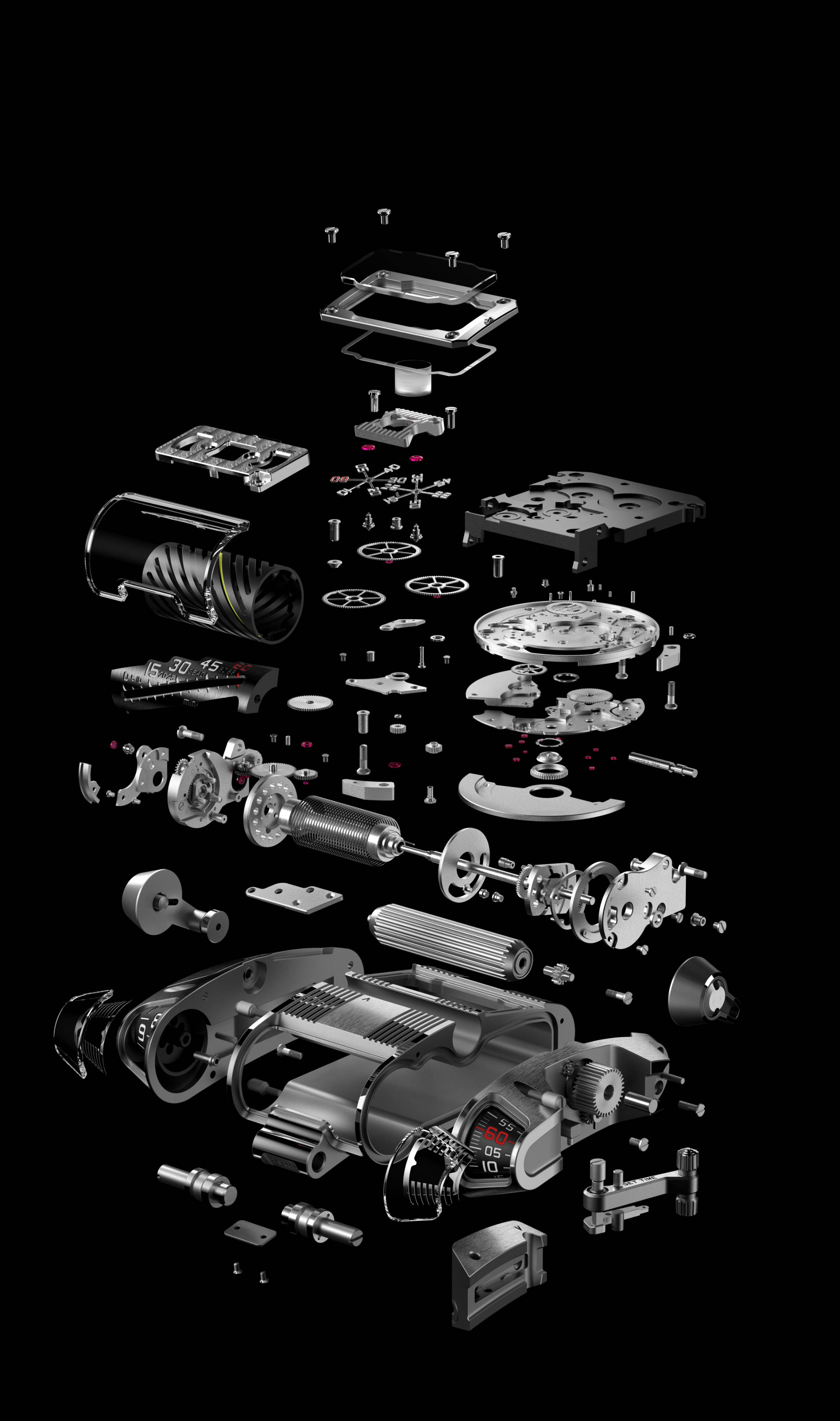New Watch! • 08 Apr 2019
Behind Urwerk’s UR-111C
If you want to look at your wrist and read the time conventionally with hands and a dial, there are dozens of watch brands with centuries of history that can supply you with something to do that job. If you are looking for something a little different, you will find Urwerk.

The masters of innovative display layouts are famous for rethinking how to communicate time, and forcing people to peek behind the curtain of time telling that is so ingrained in us. Ingrained to the degree that we struggle to remember how, as children, we couldn’t read an analogue clock’s face.

Urwerk have continued to impress with the release of the UR-111C, a brand new piece with a rather interesting history behind it. This latest model is designed in the style of a driving watch that can be read clearly without having to take your hand off the steering wheel, by using a language that is unmistakably Urwerk.

Ultramodern and industrial, but with subtle nods to Streamline Moderne (an international style of Art Deco architecture and design that emerged in the 1930s), this model is a direct descendant of the Urwerk UR-CC1 “King Cobra”, which (and this is where the history gets more interesting) in turn takes inspiration from a highly unusual Patek Philippe from 1958.

The watch by Patek Philippe was a prototype piece named Cobra, designed by Louis Cottier to be the first ever wristwatch with a linear time display. The Patek Philippe Cobra never went into production; possibly due to the huge technical challenges in manufacturing the movement, but inspired Urwerk to take up the challenge of making a watch with such a display half a century later. The “CC” in the Urwerk model name stands for Cottier Cobra, a fitting homage to the ambition of the original designer.

Reading from left to right, the UR-111C features a cone-shaped display for jumping hours, a central barrel that rotates to show linear minutes, and a right-hand cone display for digital minutes. There is a separate aperture at the top of the case for running seconds, just above a cylindrical roller that both winds and sets the watch.

Despite an aesthetic history that looks into the past, the UR-111C has its feet firmly planted in the future, with brightly contrasting numerals, case finishing and a utilitarian strap that communicates a feeling that is almost Blade Runner-esque. Combined with the Urwerk launch video that features an angular flying vehicle, soaring across a darkened landscape to touch down on an artificially lit pyramid, you might even be reminded of the year in which the original Blade Runner film was set.

This futurism is also paralleled in the innovative materials used, including the first-ever watchmaking use of a fused optical fibre image conduit, that acts to magnify the seconds display in the place of a more traditional “Cyclops” lens. A very hi-tech solution to a very old watchmaking problem – something Urwerk has built their name on. The movement used in the UR-111C is automatic winding, and will run for 48 hours when fully wound.
A response to the Urwerk design language is often one of surprise or confusion, followed by a serious appreciation for the level of technical prowess demonstrated in their work. While their watchmaking is built on traditional foundations, their execution is avant-garde, and the UR-111C is a perfect expression of what they do best. Highly technical and thought-provoking, they want you to look at your wrist unconventionally.












